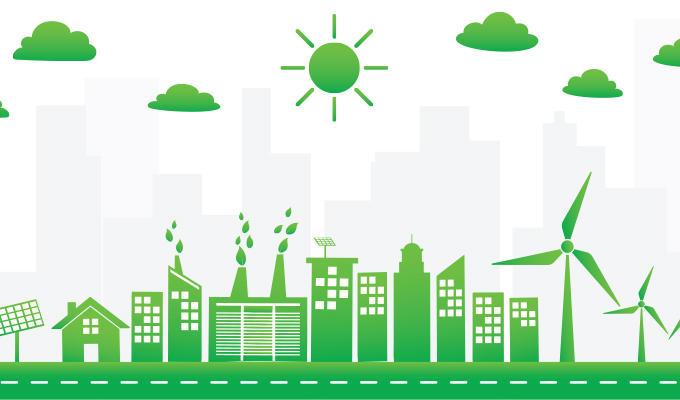Keeping up with changes
By Tommy Linstroth
The demand for green construction services continues to build. According to the most recent research by the U.S. Green Building Council, construction industry respondents expected more than 60 percent of their projects to be green through 2021.
To successfully compete in this market, contractors will have to work hard to keep up with changes in green building standards and technology. A culture of continual learning should be part of every successful business in order to provide a competitive advantage. So, here are three trends to keep an eye on during 2020 and beyond.
TACKLING EMBODIED CARBON
The green construction industry is beginning to tackle the challenge of reducing “embodied carbon,” looking beyond the idea of simply finding ways to limit carbon emissions during construction. For years, green standards have just focused on reducing operating emissions, but with the explosive growth of the built environment, though, this is being rethought.
Awareness of the importance of dealing with embodied carbon has increased over the past decade. The term refers to the CO2 emitted during the manufacturing and transportation of the construction materials used in building a structure, as well as what is emitted over the lifecycle of the finished structure.
Why is embodied carbon such an issue? It’s estimated to be currently responsible for 28 percent of building sector emissions. The world is projected to add the equivalent of an entire New York City to the planet every 34 days for the next 40 years, according to a United Nations global status report. So, if standards remain the same, this will only increase.
In late 2019, Carbon Leadership Forum and C Change Labs released the Embodied Carbon Construction Calculator to help construction teams analyze the various carbon impacts of products. The problem is also being addressed in v4.1 of the Leadership in Energy and Environmental Design (LEED) certification, which includes updates to its Materials and Resources (MR) credit category to incentivize reductions in embodied carbon. Currently in pilot phase, the revised standards are expected to be ratified this year.
EVOLVING GREEN REGULATIONS AND STANDARDS
State and local governments will continue driving more demand for green construction through regulations and ever-tighter standards. In 2019 alone, Washington, D.C., and New York City passed major new laws requiring significantly increased energy efficiency for existing buildings.
Roughly two-thirds of states and thousands of municipalities currently require some sort of green certification for construction companies to be eligible to bid on government projects, and there is no sign this is going to change.
Standards continue growing stricter. This means there will be a continual learning curve for all of those people who are chasing green construction work. Those requirements aren’t going away. Everyone who is participating in the process will need to get up to speed on these requirements.
Frankly, any builder or contractor who is looking to build a fire station or a police station or a municipal building needs to be prepared to manage the process and meet contractual obligations for green certification, if they want to be competitive in today’s marketplace.
MODULAR TECHNOLOGY
Another green construction trend we’re watching is the growing adoption of modular technology. According to McKinsey, wholesale adoption of modular construction techniques could eventually save construction companies in the U.S. and Europe $22 billion per year in reduced build costs.
As a green construction option, it certainly makes a lot of sense—components and structures can be built off-site in factory-controlled conditions, which reduces waste during both manufacturing and installation. It is also a means to speed up the construction process because teams can just show up on-site and put panels or modules together, rather than building them from scratch.
We are seeing contractors begin to adopt modular construction techniques on a larger scale, whether it’s using prefab walls and components or even whole structures. We’ve seen modular construction technology grow into a long-standing trend in the interior side of things, and now we’re starting to see it more frequently on a larger scale with the capacity for the production of complete modular buildings versus just interior components.
CLOSING THOUGHT
From dealing with embodied carbon to staying educated on state and local regulations, green construction companies will have to keep up with a changing marketplace. It’s an exciting time to be in the industry, and staying on top of trends will help benefit your bottom line in the long run.
About the author:
Tommy Linstroth is founder and CEO of Green Badger, a cloud-based solution for equipping project teams of all levels of experience with the tools they need to document LEED as efficiently as possible. For more, visit www.getgreenbadger.com.
Modern Contractor Solutions, February 2020
Did you enjoy this article?
Subscribe to the FREE Digital Edition of Modern Contractor Solutions magazine.



